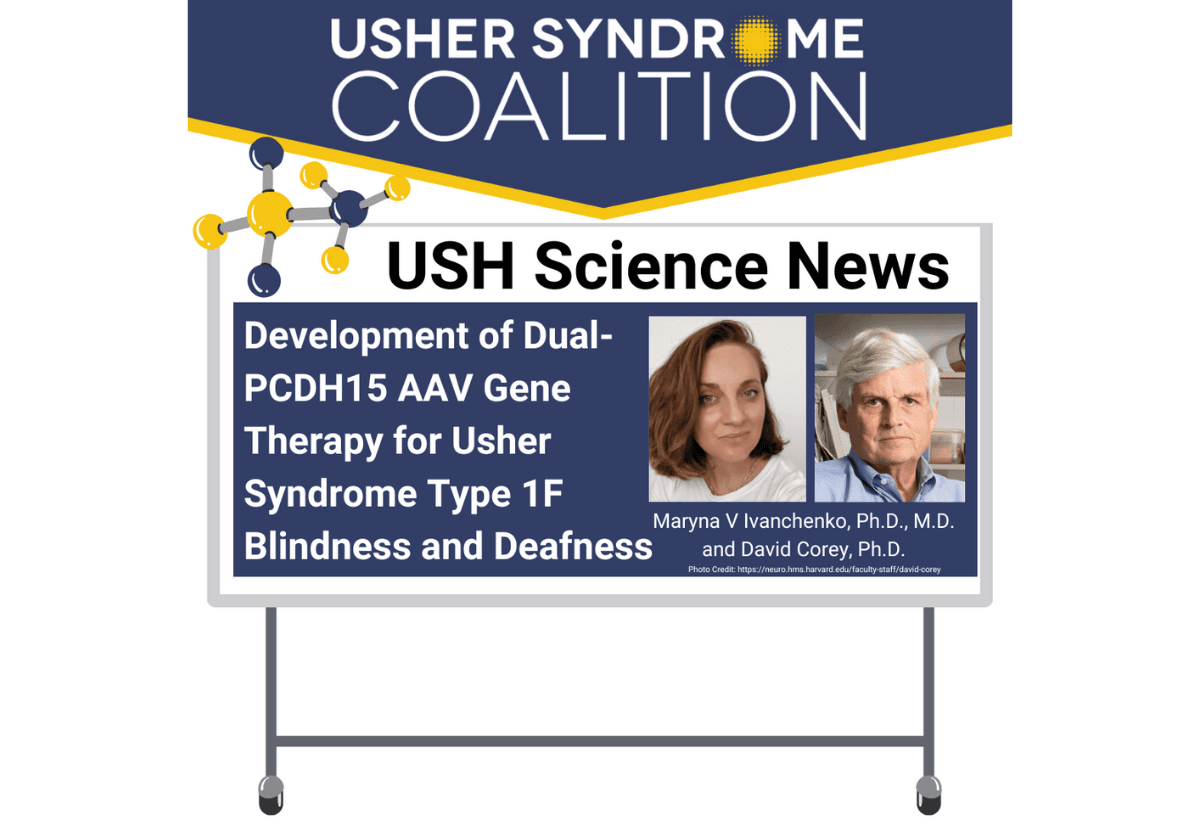
David Corey, Ph.D. and Maryna V Ivanchenko, Ph.D., M.D. at Harvard University have been working to develop treatments for Usher syndrome type 1F. In June 2022, they published an ARVO paper titled "Development of Dual-PCDH15 AAV Gene Therapy for Usher Syndrome Type 1F Blindness and Deafness." In this paper, they explain how gene therapy is an attractive therapeutic approach for USH1F, however, the gene that causes this subtype, PCDH15, is too large to be used in a single AAV vector model. They were able to successfully show that "mice treated with dual AAVs encoding PCDH15 demonstrated good hearing rescue" (Ivanchenko, et al. 2022).
Dr. Corey's goal is to rescue vision, but he is testing first on hearing because it’s easier to measure in a mouse model. Because babies with Usher 1 are born profoundly deaf but sighted, researchers believe that the hearing is more sensitive to the absence of the protein than vision. Therefore, if a gene therapy rescues hearing, theoretically, it should also rescue vision.
The Corey Laboratory continues to produce exciting research on gene therapies for USH1F that could one day allow for treatment models for other Usher syndrome subtypes. Read more about the various research projects at the Corey Lab here: https://corey.med.harvard.edu/
Watch Dr. Corey's presentation on his mini-gene here: https://bit.ly/USH1Fminigene
Learn more about USH1F here: https://www.usher1f.org/








